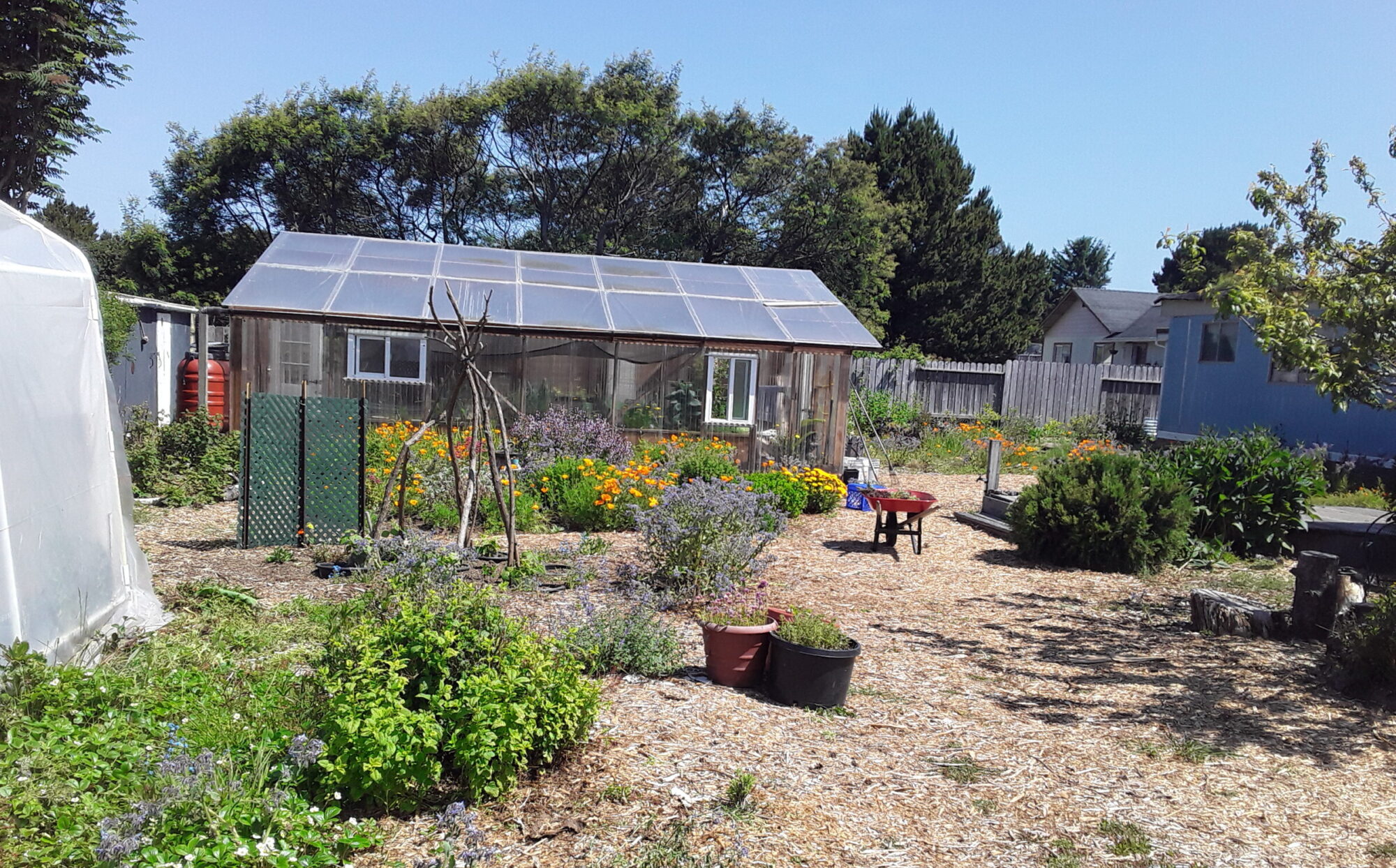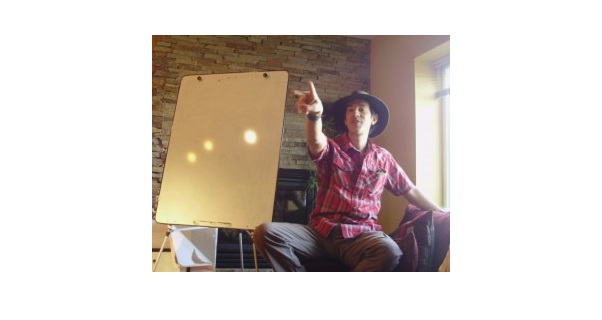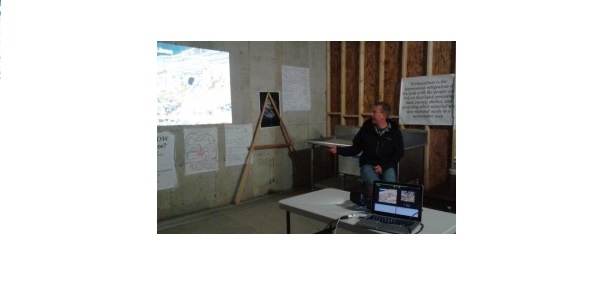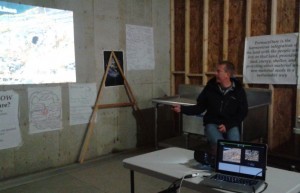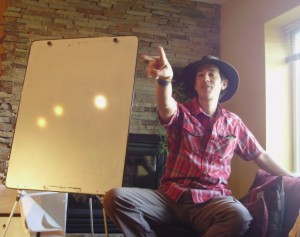
When’s the last time you raked leaves and put them in the garbage? Well, stop it, just stop it.
Permaculture co-founder David Holmgren would tell you leaves are a valuable resource. They make great mulch, protecting plants in the winter and maintaining soil moisture in the summer.
Leaves, manure, bugs, birds, and yes, weeds are welcome in a permie garden. That’s because everything is part of a living system where the inputs (needs) of one are met by the outputs of another. “Produce No Waste” is one of 12 guiding principles articulated by Holmgren, who has been practicing permaculture for more than 30 years.
The June Permaculture Design Certification class saw Holmgren’s principle put to practice by guest instructors Marco Lam, Avery Ellis, Nikko Woolf and lead instructor Becky Elder.
Lam talked about animal systems; Ellis, aquaponics; and Woolf and Elder, natural building.
Lam pointed out that animals such as chickens, ducks, pigs and geese have important outputs that are generally ignored in commercial and traditional animal systems. Sure they produce eggs, meat and other products – but what about work they perform that benefit the whole system?
“Efficiency in permaculture means the multiple outputs rather than simply the production level of the animals,” Lam said. “Chickens scratch and forage, produce manure, etcetera.”
Related: June PDC photo gallery
In aquaponics, where food plants are grown in a fish tank, inputs and outputs are met in very specific ways. Fish waste provides nutrients to the plants which, in turn, purify the water. Ellis described the process as a “nitrogen cycle.” Fish waste produces nitrogen ammonia which bacteria turn into nitrogen nitrite. Bacteria then turn the nitrite into nitrogen nitrate which helps plants grow.
No waste.
Natural building utilizes materials produced by nature to fulfill the human need for shelter. Woolf described several types of natural building including cob, which uses clay soil, sand, water and straw. Globs of the material or “cobs” are piled on top of each other and worked together to form walls.
Reused materials are incorporated into the rest of the structure. Windows, doors and other discarded building material can be repurposed, making it cost effective and gentler on the planet. Sunlight and wind are harnessed for passive heating and cooling, reducing dependence on petroleum-based energy.
Reduce, reuse, recycle, no waste.
“In permaculture, we’re trying to get away from fossil fuels,” Elder added. “Having an energy efficient house in the future is going to be critical.”
Permaculture strives to imitate natural systems so that human activity provides for our needs and our ecosystem rather than simply consuming it. Here lies hope for a better, more sustainable future.
So the next time leaves start falling, put the rake away and take a nap instead.
Holmgren’s twelve principles
Visit Holmgren Design for more on the principles.
Observe and interact
By taking time to engage with nature we can design solutions that suit our particular situation.
Catch and store energy
By developing systems that collect resources at peak abundance, we can use them in times of need.
Obtain a yield
Ensure that you are getting truly useful rewards as part of the work that you are doing.
Apply self-regulation and accept feedback
We need to discourage inappropriate activity to ensure that systems can continue to function well.
Use and value renewable resources
Make the best use of nature’s abundance to reduce our consumptive behavior and dependence on non-renewable resources.
Produce no waste
By valuing and making use of all the resources that are available to us, nothing goes to waste.
Design from patterns to details
By stepping back, we can observe patterns in nature and society. These can form the backbone of our designs, with the details filled in as we go.
Integrate rather than segregate
By putting the right things in the right place, relationships develop between those things and they work together to support each other.
Use small and slow solutions
Small and slow systems are easier to maintain than big ones, making better use of local resources and producing more sustainable outcomes.
Use and value diversity
Diversity reduces vulnerability to a variety of threats and takes advantage of the unique nature of the environment in which it resides.
Use edge and value the marginal
The interface between things is where the most interesting events take place. These are often the most valuable, diverse and productive elements in the system.
Creatively use and respond to change
We can have a positive impact on inevitable change by carefully observing, and then intervening at the right time.
